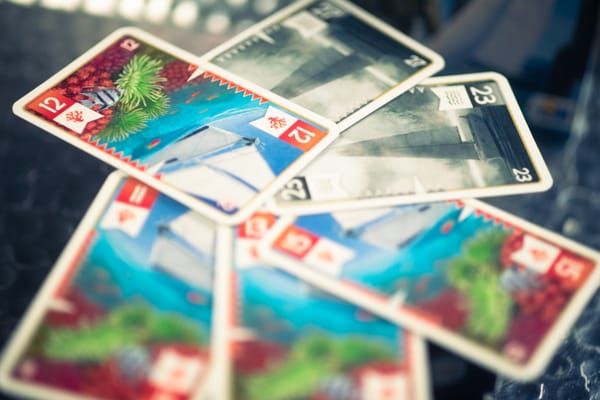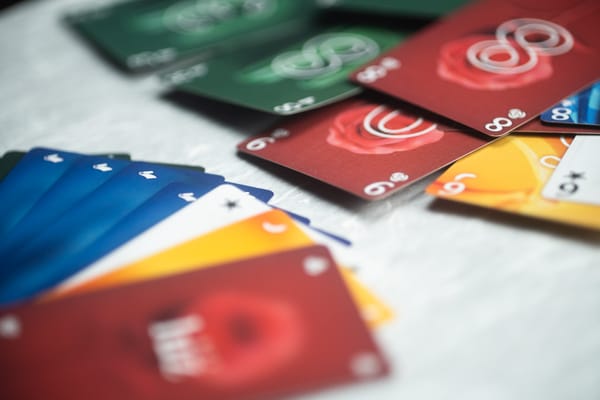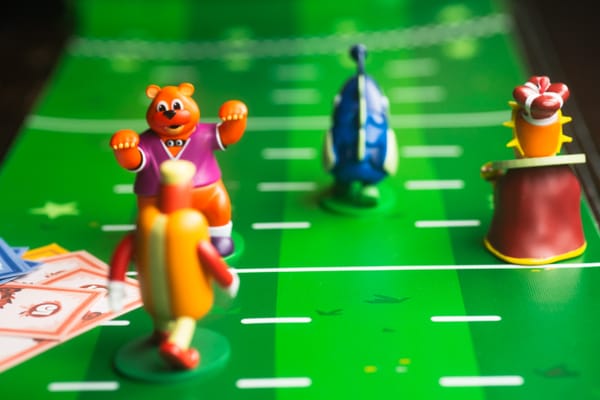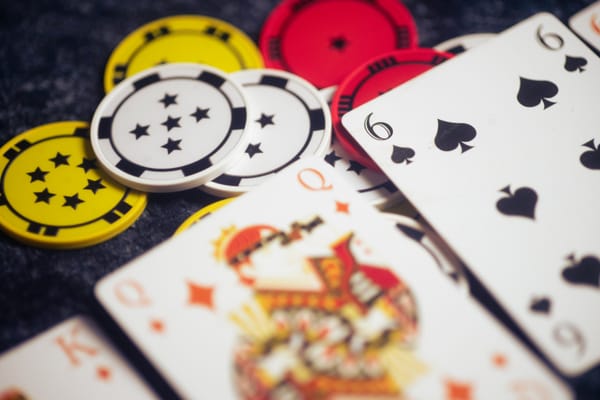Four games from Japan I played last week
Two dexterity games and two card games: There's a lot to love.
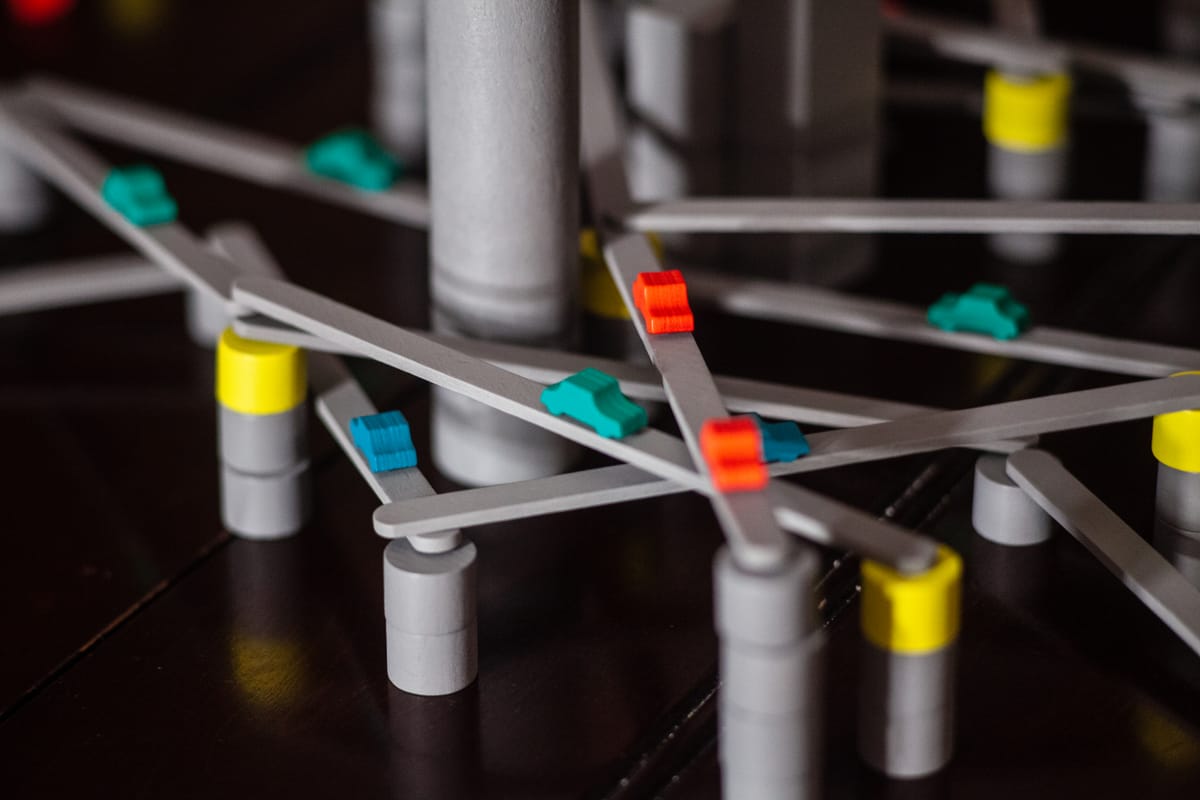

There are so many brilliant games published at a near-constant rate as thew board game hobby has grown. Everywhere you turn, you can find professionally published games from great designers, and increasingly, you can find self-published efforts. With all that growth, it can sometimes be fun to look outside the normal bounds of the search. Japanese-published games present that for me. Here, you’ll find two card games that execute on trhe promise of tension better than most, and you’ll find two absolutely sublime dexterity games. Enjoy!
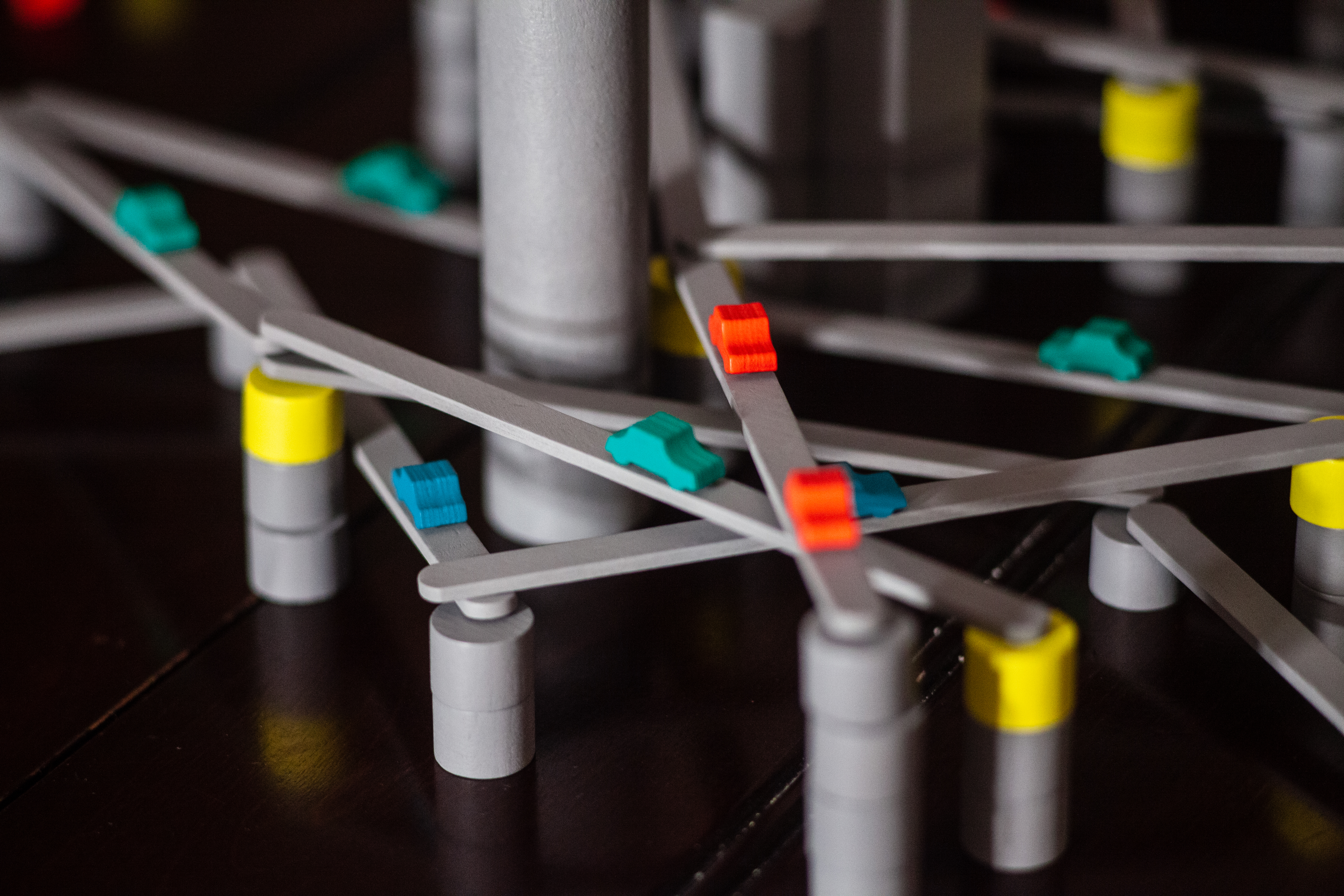
Tokyo Highway remains an all-time great dexterity game, and it accomplishes some truly remarkable things with some discs and sticks. The rules are simple: You’re building a highway towering above the ground, crossing over and under other players’ highways. On your turn, you will play discs (one more or fewer than the last location you built), then you’ll connect your new location in your highway to your last location. If you cross over a piece of an opponent’s highway that’s not yet been crossed over, you can place a car on your new road piece; the same applies if you cross under a highway that’s not yet been built under. There are a couple more details that impact the way you play, but by and large, it really is that simple. And barring one rule, it’s a pretty friendly game — we’ll get to that rule.
A simple ruleset is a must-have in a good dexterity game, as it allows the constraints of the game to be physical and not simply conceptual. Tokyo Highway may have a narrow casting of how you might earn points, but the rules for placement are themselves simple. You’re placing discs either up one level, down one level, or utilizing a junction to move any number of levels, and you must place your discs one stick’s-length away from your last placement. It’s a dexterity game in that these pieces are not always straightforward to place, and you will probably fail as you attempt to place them. But it’s more than that: It’s also a game of spatial competition.
Unlike a typical area control game, where you will find most games focused on spatial competition, this feels somewhat more abstract in its strategy. At its core, this is a three-dimensional abstract strategy game. If you replace the cars with generic cubes — aside from being slightly easier (or potentially harder, depending on the situation) to place, you could play this game without a theme at all. Would it be as marketable? Probably not. The gameplay wouldn’t necessarily suffer for it, though — there’s little about this game that even needs a theme. As much as the game doesn’t demand a theme for its own sake, it does provide it with a certain richness. It does actually recall the Tokyo highway system, with its interwoven, stacked systems. When you look at the game on the table, you see it as a system of roads. Is it simply imbued with the theme by its name alone? The game is entirely grey, but so are the highways.
That rule, which I usually omit from play, is that when you knock over somebody else’s pieces, you must reconstruct what they’ve built then give them pieces of your own. It limits what you can do if you’re accidentally destructive, and it feels unfairly punishing. I’m not usually one for house rules, but this is a case where I’ll usually enact one. The game works perfectly well without it, but it creates a feel-bad moment for me. Giving up pieces and thus shortening your game — and potentially eliminating a player for clumsiness alone — is not strictly necessary. (I do think it’s worth doing if folks continually try extremely risky placements without regard to consequence; this is not something I’ve really encountered.) And, of course, when inevitably the whole thing comes toppling down late in the game, the player who topples everything is ineligible for victory.
None of that should be read as indicative of a fault in Tokyo Highway. I understand the purpose of the rule: It adds stakes. Stakes can be fun and exciting. You want to know that making a mistake matters. I truly do get it, but I’m left wondering if there might be some other way to execute on the idea. Perhaps you could have a ‘penalty box’ of your pieces that you place there when you make other players’ pieces fall, and you get two back after each successful action. It incentivizes safety a bit, but it doesn’t make it a damning consequence when you make pieces fall late-game.
Tokyo Highway is, in fact, a very good game. It’s good enough to have been published internationally by Asmodee. It’s good enough to have received a new ‘Rainbow’ edition in 2024, with pieces that are just a bit more stable and a few rules tweaks. With its first release in 2016, it’s had great staying power. It’s one of my favorite games to introduce to new gamers: There’s just nothing out there quite like it.
Designed by Naotaka Shimamoto and Yoshiaki Tomioka, illustrated by Yoshiaki Tomioka, and published by itten.
————————
Crash Octopus is a surprising little dexterity game, and not just because it’ll take up as much of your table space as it can. It’s a flicking game where you’re aiming to pick up five unique pieces of treasure to end the game, but you won’t be flicking with your finger like you would in most dexterity games. In this one, you’re using a little flag to do your flicking, and you’ll be trying to hit your ship with the pieces of treasure you’d like to collect. However, as you load treasure, it becomes easy to knock them off your ship, resulting in a minor tragedy. Again, a simple ruleset and a brilliant dexterity game: What’s not to like? This game gets a little bit mean, too, because when players load treasure, the game advances along a track, and at more than half the spaces along which it advances, it’ll instruct you to roll a die. You’re not rolling in the usual sense; you’re instead bouncing the die off a wooden octopus head, and you’re trying to aim that die at your opponents’ ships. If you’re not careful, though, you’ll knock the treasure off your own ship, which I’ve absolutely done before. This game has made me laugh like few games ever have — there’s just something inherently comedic about knocking around ships with a big cube off the head of a pink octopus. Designed by Naotaka Shimamoto, illustrated by Yoshiaki Tomioka, and published by itten.
—
Schadenfreude is a trick-taking game with a natural tension that’s so hard to find in games. The whole game hinges on being the closest to 40 points at the game ends, but the game only ends when somebody ends a round with more than 40 points. That alone would probably make for a compelling-enough game, with that over-the-line idea being generally engaging, but it’s helped along by the fact that the winner of a trick is the player with the second-highest card on suit. Not the highest — the second-highest. You’re always weighing the consequences of playing your high cards and low cards. Finally, you take the card you won with, and any cards played off-suit. Those become points, but if you ever end up with duplicates, they cancel out, and you won’t end up taking those particular points at the end of the round. There’s a lot to wrap your head around here, but it’s so compelling.
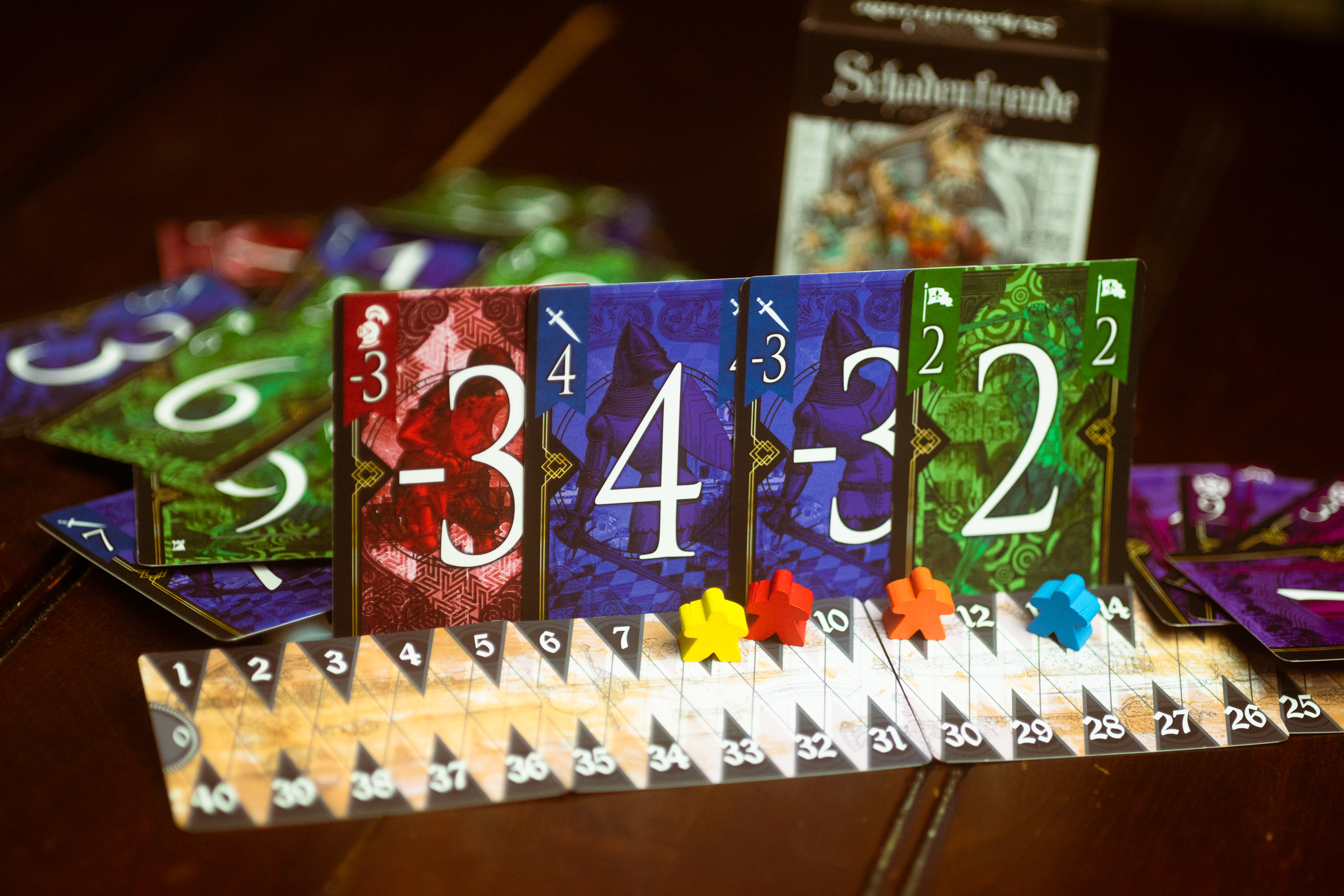
Designed by ctr, published by Studio Turbine.
—
Trickarus is another trick-taking game, and similar to Schadenfreude, it has an end-game trigger when somebody crosses a points threshold, though in this case, that player is still eligible to win after being bumped down significantly in points. This is a take on the tale of Icarus of Greek myth, who flew too close to the sun and melted his bespoke wings. The game its theme well, though you’re each playing as Icarus, and you’re each trying not to win too many tricks — more than 9 and you’ll drop down below the last-placed player, and you’ll trigger the end of the game. You’ll still play out the round, though, which means that in a particularly tight game, a player who flies too close to the sun still retains a chance at victory. There’s still one more big twist: These cards have a different value on top as on bottom, and when any player plays a 5-rank card, you’ll flip your hand over. And most importantly, when you flip over your hand, you’ll also flip the suit that’s trump — either the sun or the moon. While it’s temping to think of this game as chaotic, I think there’s something deeper here, and I’m excited to play more. Designed by Bajir Cannon, illustrated by TANSAN DESIGN STUDIO, and published by Learn Bridge Online.
I hope you’ve had a great week! I’ll be back next week with something — we’ll just have to see what that something is.



